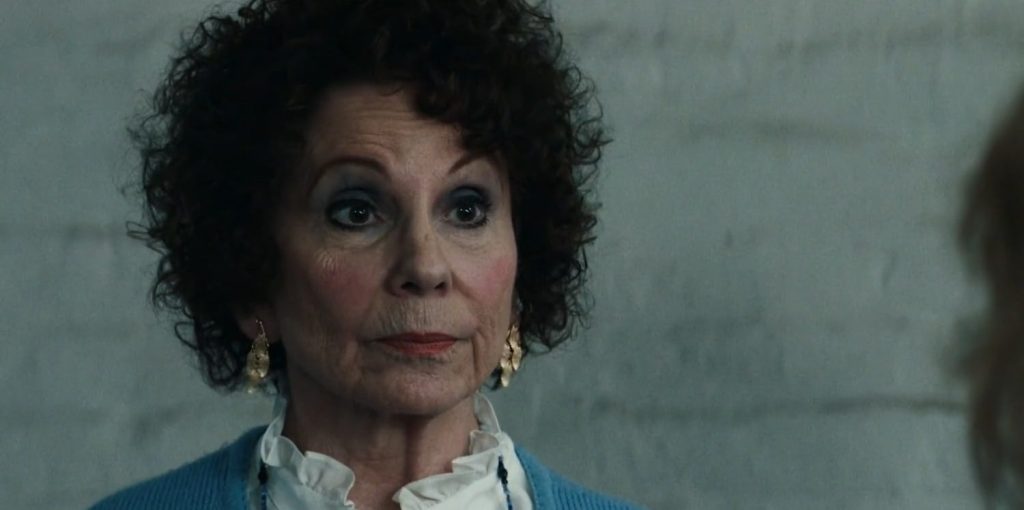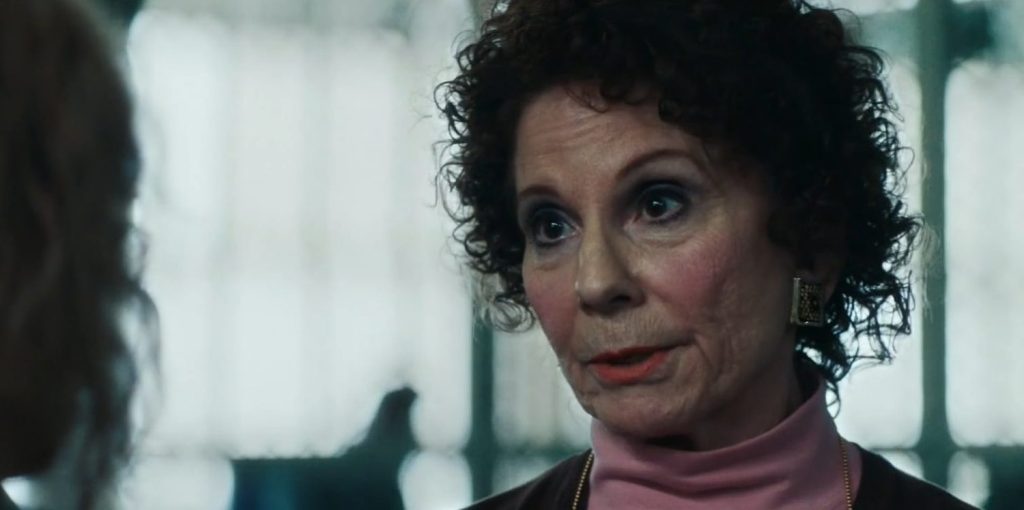Created by Brett Johnson and Michael Tolkin, ‘Escape at Dannemora’ chronicles the true story of the 2015 Clinton Correctional Facility escape in Dannemora, New York, by inmates Richard Matt and David Sweat. As explored in the thriller show, the two prisoners become entangled in a sexual relationship with civilian prison staffer Joyce Mitchell, who ends up helping them stage their prison break. However, Mitchell runs afoul of her supervisor, Ilene Mulvaney, multiple times as her inappropriate behavior gets flagged up constantly. It leads to friction and internal politics within the prison complex, causing a lot of drama, which ends up benefiting Matt and Sweat in the long run.
Ilene Mulvaney: A Fictional Prison Supervisor With Vague Ties to Reality
For the most part, ‘Escape at Dannemora’ is an accurate retelling of the 2015 Clinton Correctional Facility escape, with a focus on the central characters of Richard Matt, David Sweat, and Joyce Mitchell. However, the show does feature a few dramatized aspects that deviate from the exact story, which extends to the character of Ilene Mulvaney. She was created by scriptwriters Brett Johnson, Michael Tolkin, Dustin LaValley, and Jerry Stahl and serves as an opposition force to Mitchell’s character in the series, often stepping on her toes to keep the tailor shop supervisor in line. In fact, in several moments throughout the narrative, Mitchell expresses a deep disdain and stubbornness towards Mulvaney.

Although the supervisor does not exist in reality, she might be partly inspired by the person overseeing matters during the real case, Stephen Scholl. He was the industrial superintendent during the time and was responsible for managing a lot of the industry aspects of the prison facility, including the tailor shop. According to Inspector General Catherine Leahy-Scott’s investigative report, Scholl caught glimpses of Joyce Mitchell’s alleged close relationship with David Sweat during his tenure. As such, he could have formed some of the basis for Mulvaney’s role in the narrative, as the supervisor often fights battles with Mitchell over the subject matter. Still, the similarities are only skin-deep and do not reflect the exact scenarios in play.
One of the most pivotal scenes in the season takes place in the second episode when an anonymous letter from a prison inmate points to Mitchell’s quick forays into the backroom area of the tailor shop with Sweat, which is seen as highly irregular. A letter of the same nature was, in fact, sent during the actual case as well. It became a subject of contention but did not result in Sweat’s removal, as depicted in the series. That happened after another incident occurred, one involving an alleged disparaging comment Sweat made about another female civilian employee.

The show conflates several events and characters together to give a more holistic view through a more focused lens. Therefore, some scenes are dramatized to reflect the most important plot threads while taking creative liberties with the rest. For instance, Mulvaney is the one who pulls up Mitchell’s conduct and removes David Sweat from his role as a sewer. However, in reality, the responsibility for removing David Sweat from the tailor shop allegedly fell upon Captain David Lucia, another prison security staffer investigating the matter. Thus, the actual character of Ilene Mulvaney is a seemingly composite fictional character drawn from the different real-life prison staffers in CCF at the time.
The fictional version depicts Joyce Mitchell as being satisfied in continuing her extra-marital affair with David Sweat, with no concern for breaching ethical protocols. Thus, when Mulvaney offers the first form of pushback, the tailor shop worker is incensed and starts raging about her treatment. Her outbreak during the situation also has some grounds in reality, as Mitchell allegedly exclaimed loudly in the shop when she read the letter herself. Despite the various points of reference, Mulvaney is distinctly fictional in origin and has no connection to any of the real-life people mentioned above outside some vague inspirations.
Read More: Escape at Dannemora: Is Angel Chavez Based on a Real Prison Inmate?


You must be logged in to post a comment.